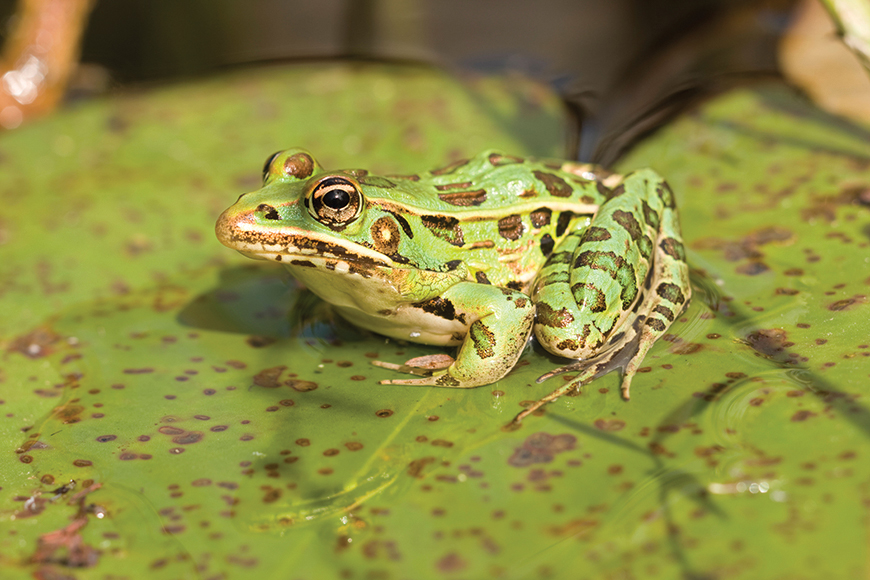Leopard frog is a group of North American frogs that have large dark brown spots with light borders. These spots somewhat resemble the spots of a leopard. Leopard frogs are found from southern Canada through most of the United States and Mexico. Some live in parts of Central America. They usually inhabit irrigation ditches, marshes, ponds, wet meadows, and backwater pools of streams or rivers. There are about 20 species (kinds).

Leopard frogs grow about 2 to 5 inches (5 to 13 centimeters) long, not including the legs. Their bodies are brown or green. Narrow yellow folds extend from behind the eye to where the thigh joins the abdomen. Leopard frogs are slender with long, muscular legs. They are excellent jumpers.
Leopard frogs typically sit on shorelines and quietly wait for prey. They feed on grasshoppers, caterpillars, spiders, and many other small invertebrates (animals without backbones). Leopard frogs are fed upon by birds, fish, snakes, and other animals. They escape predators (hunting animals) by leaping into grass or the water. Underwater, they evade capture using zigzag motions and hide under vegetation or mud at the bottom.
During the breeding season, males call to attract females. The call is generally a series of chuckling and snoring sounds, though it varies by species. Each female deposits from hundreds to several thousand black eggs. Tadpoles become froglets in about three months.
Several leopard frog species are in danger of dying out completely. At least one species has already become extinct. Threats to leopard frogs include the loss of wetlands, introduced predators, water pollution, and a fungal disease called chytridiomycosis.
